Rubber mulch: as a parent, I worried about my kids’ safety in play areas. The thought of them falling and getting hurt on hard surfaces scared me. But then I found out about rubber mulch, and everything changed.
Rubber mulch made the playground a soft, safe place for my kids to play. They could explore without worrying about getting hurt.
Rubber mulch is a modern solution for landscaping. It’s not just good for safety; it’s also durable and easy to maintain. It’s becoming popular among homeowners, landlords, and playground designers. Let’s explore why rubber mulch might be the best choice for your outdoor spaces.
Table of Contents
Understanding Rubber Mulch: A Modern Landscaping Solution
Rubber mulch is made from recycled tires. It’s a modern choice for landscaping. It lasts long and needs little care. This material is made from recycled tires and looks great in any outdoor area.
What Makes Rubber Mulch Different
Rubber mulch is different from natural mulches like wood chips. It lasts 5-10 years, not 1-3 like wood chips. This makes it a better choice for your garden because it saves money and is good for the planet.
Components and Manufacturing Process
Rubber mulch is made from recycled tires. This process keeps millions of tires out of landfills. The tires are shredded and turned into the durable mulch we use.
Available Types and Colors
Rubber mulch comes in many colors. You can find everything from black to red, brown, and green. This lets you pick the perfect color for your garden or playground.
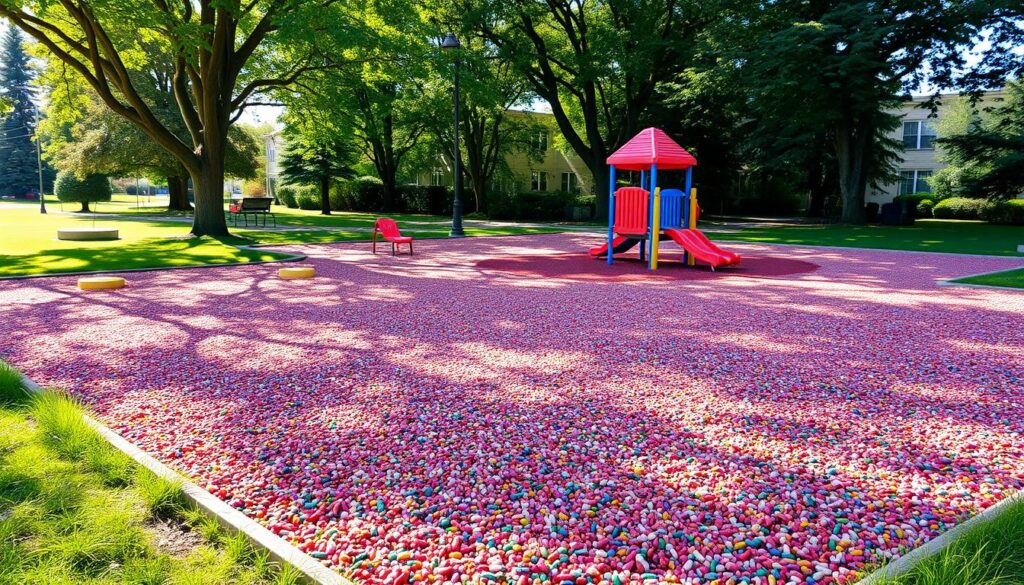
“Rubber mulch is an excellent choice for creating a low-maintenance, long-lasting, and visually appealing landscape. Its unique properties make it a standout solution for homeowners and professionals alike.”
The Environmental Impact of Recycled Rubber Mulch
Recycled rubber mulch is seen as a green choice for landscaping. It turns old tires into something useful, cutting down on waste. But, there are both good and bad sides to its environmental effect.
Recycled rubber mulch lasts a long time, unlike organic mulches that break down. This means you don’t have to replace it as often. This can save resources and reduce waste, which is good for the planet.
But, recycled rubber doesn’t break down and might harm the soil. Some studies found harmful chemicals in it. This is a complex issue that needs more research and thought.
“Recycling tires into mulch is an innovative way to repurpose a waste material, but the environmental implications must be thoroughly evaluated to ensure sustainable practices.”
Despite the risks, recycled rubber mulch has its perks. It keeps tires out of landfills and uses less energy to make. This makes it a step towards a greener future.
The impact of recycled rubber mulch is complex. We need to weigh the pros and cons. As we choose materials for our gardens, looking for reliable sources is key.
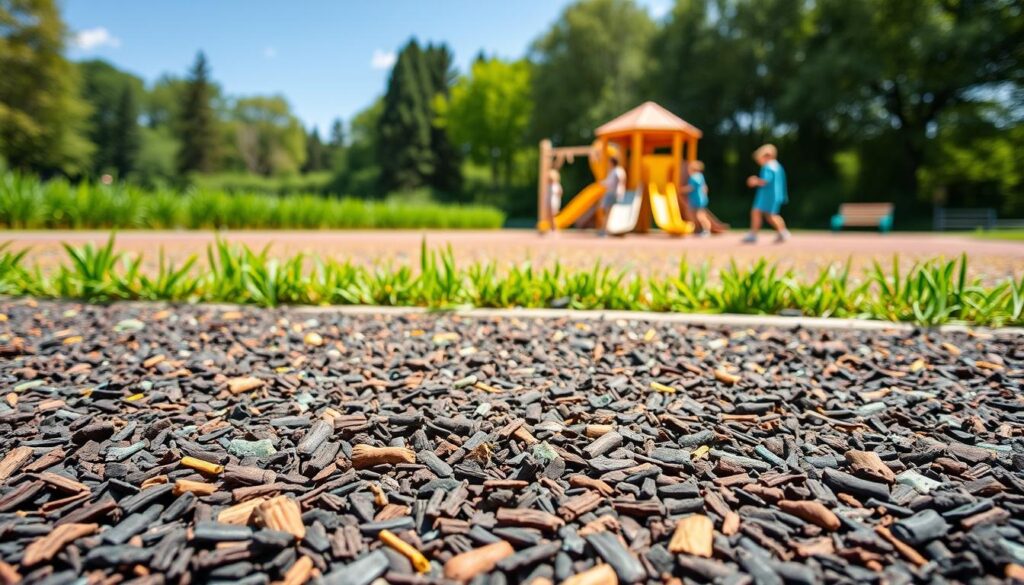
Safety Features and Impact Protection
Rubber-mulch is the top pick for playground safety. It’s better than wood chips or sand because it absorbs impact well. This makes it safer for kids to land on.
Rubber-mulch meets high safety standards, including ASTM F1292-22. It’s elastic and resilient, creating a protective layer. This layer helps prevent serious injuries.
Fall Height Protection Ratings
Rubber-mulch can handle high-impact falls. It has a high critical fall height rating. This means it’s safe for kids to play on taller equipment.
Compliance with Safety Standards
Rubber safety surfacing meets or exceeds ASTM International standards. This ensures it’s safe for kids to play on. It’s tested to protect against impact and injuries.
Injury Prevention Benefits
Rubber-mulch is great for playground safety. It absorbs shock and reduces fall impact. This helps prevent injuries like fractures and head trauma.
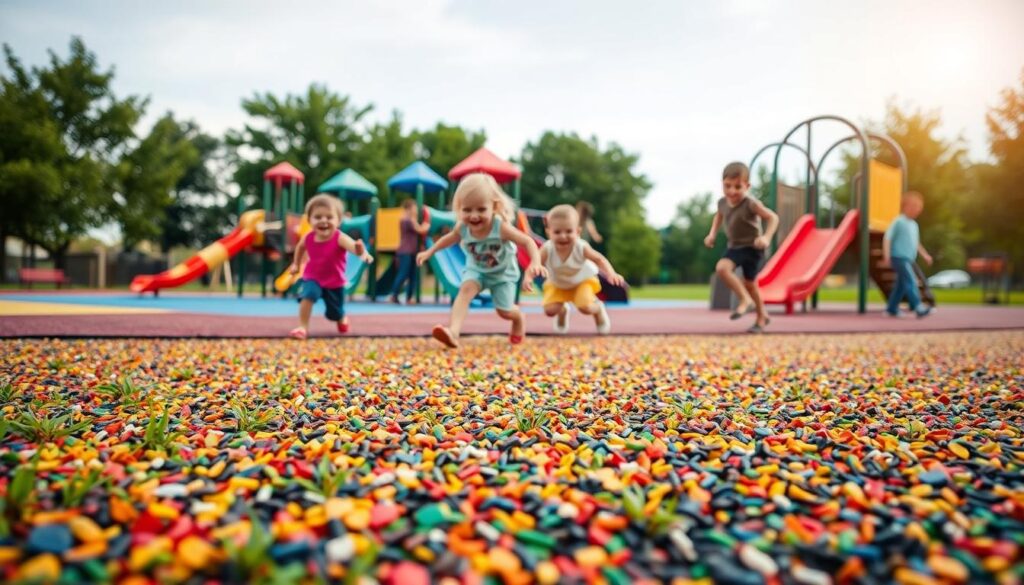
“Rubber mulch is a game-changer for playground safety, offering unparalleled impact protection and reducing the risk of injuries.”
Cost Analysis: Initial Investment vs. Long-term Value
Choosing landscaping materials can be tricky. Rubbr mulch might seem pricier at first, costing more than organic options. It can cost over $6 per cubic foot, while wood chips or bark mulch are cheaper, from $3 to $5. But, rubbr mulch’s long-term benefits make it a smart choice for many.
Rubber mulch lasts a long time, up to 10 years or more with care. This means you won’t have to replace it as often. This long life helps balance out the higher initial cost.
| Landscaping Material | Initial Cost (per cubic foot) | Lifespan |
|---|---|---|
| Rubber Mulch | $6+ | Up to 10 years |
| Wood Chips/Bark Mulch | $3 – $5 | 1 – 2 years |
Rubber-mulch also needs less upkeep over time. Unlike organic mulches, it doesn’t need to be replenished or raked often. This saves you time and effort in the long run.
Even though rubber-mulch costs more upfront, its long-term benefits are worth it. It’s durable, requires little maintenance, and is a great choice for outdoor spaces.
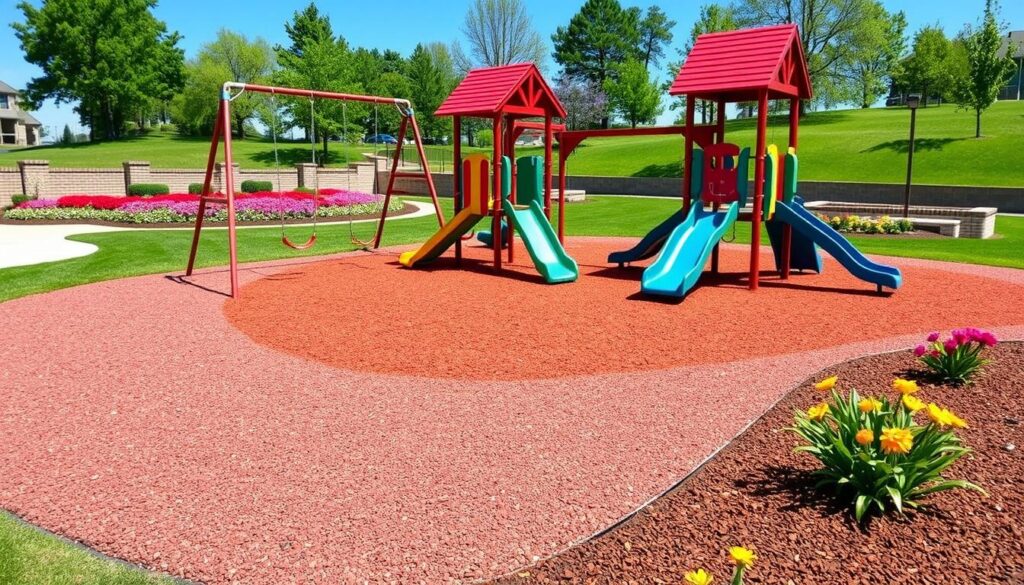
Rubber Mulch for Playground Applications
Is a top pick for playground surfaces. Made from recycled tires, it’s safe and durable. It’s perfect for playgrounds and outdoor play areas.
Installation Guidelines
Installing rubber-mulch for playgrounds needs careful steps. A 6-inch layer is key for shock absorption and safety. First, lay down a landscape fabric to stop weeds and keep the area clean.
Maintenance Requirements
- Occasional raking or leveling to maintain an even distribution of the rubber-mulch
- Minimal maintenance compared to other playground surfacing options
- No need for replenishment as the mulch does not decompose or break down over time
Durability Factors
Rubber-mulch is very durable for playgrounds. It stays safe even when weather or foot traffic moves it. It’s always dry, ready for play, even after rain.
Rubber-mulch it comes with a 12-year color guarantee. It also doesn’t decompose or compress, making it a long-term investment.
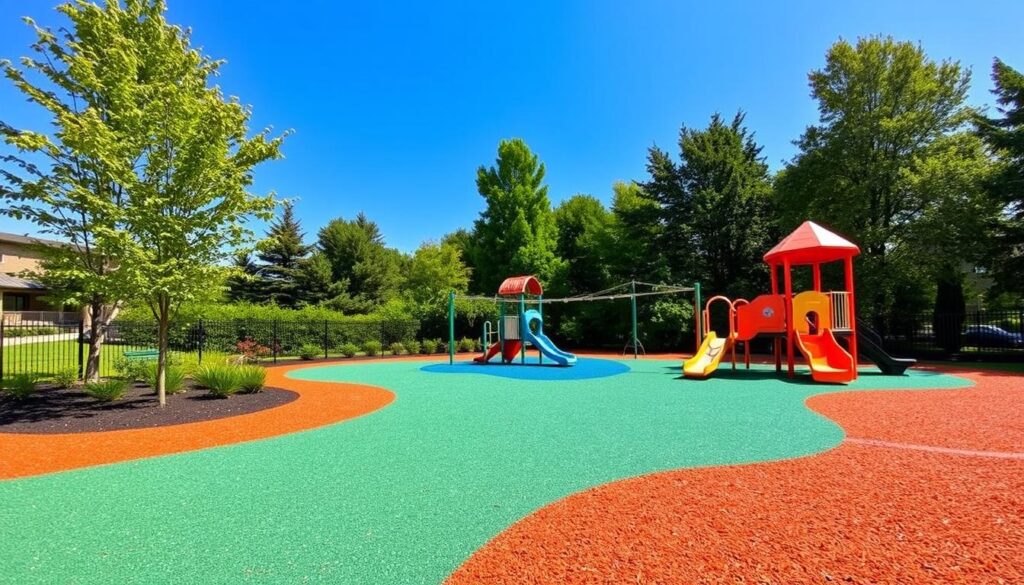
Rubber-mulch is great for playgrounds. It’s shock-absorbing, easy to install, and needs little upkeep. It’s a sustainable choice for safe, lasting playground surfaces. It ensures kids have a fun and safe play area.
Landscaping and Garden Uses
Rubber landscaping material is great for many garden and landscaping needs. It lasts long and is easy to care for, perfect for spots around big trees and shrubs. It also stops erosion well, especially in areas that flood a lot.
But, rubber-mulch isn’t the best for vegetable gardens or areas with sensitive plants because it might leach chemicals. However, it’s perfect for paths in your garden. Its slip-resistant surface and long life make it safe and durable for walkways.
- Ideal for low-maintenance areas around trees and shrubs
- Effective in controlling erosion, especially in flood-prone regions
- Suitable for garden pathways, offering slip resistance and durability
- Not recommended for vegetable gardens or areas with delicate plants
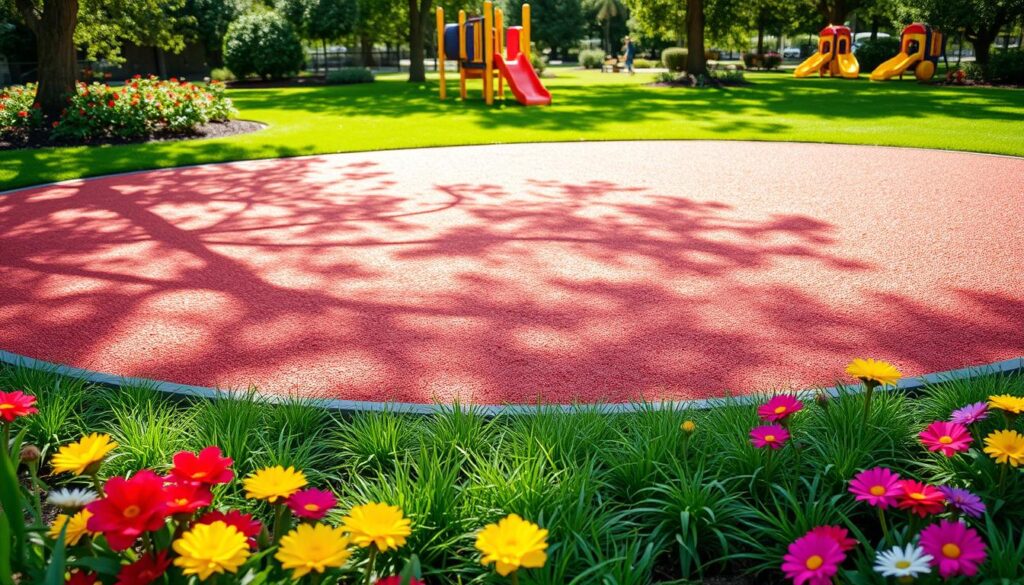
Rubber landscaping material is a smart choice for improving your outdoor areas. It’s great for creating easy-to-care-for gardens or lasting pathways. Rubber-mulch is a green and reliable option that can increase your property’s value.
Comparing Wood Mulch and Rubber Alternatives
Choosing between wood mulch and rubber-mulch for landscaping and playgrounds is key. Each has its own benefits and drawbacks to consider.
Durability Differences
Wood mulch breaks down over time, improving the soil but needing to be replaced often. Rubber mulch, however, lasts up to 10 years or more. This makes rubber-mulch a better value in the long run.
Maintenance Considerations
Wood mulch needs to be replenished regularly to keep its depth and coverage. Rubber-mulch, though, requires little upkeep since it doesn’t break down. This means less cost and time over the years.
Aesthetic Aspects
Wood mulch has a natural, earthy look that many like. Rubber-mulch, with its uniform and vibrant look, offers a range of colors. Your choice depends on what you prefer and the look you want for your space.
| Mulch Type | Durability | Maintenance | Aesthetic |
|---|---|---|---|
| Wood Mulch | Biodegrades over time, requiring frequent replacement | Needs regular replenishment to maintain depth and coverage | Natural, earthy appearance |
| Rubber-Mulch | Lasts up to 10 years or more with proper installation | Minimal maintenance required, does not break down | Uniform, vibrant appearance with various color options |
The choice between wood mulch and rubber mulch depends on your needs, budget, and taste. Both have their own strengths. Considering durability, upkeep, and looks can guide your decision for your project.
Installation Tips and Best Practices
Proper preparation is crucial for a successful rubber mulch installation. Start by laying down landscape fabric. This helps prevent weeds and makes cleanup or replacement easier later.
For general landscaping, use a 2-4 inch depth of rubber-mulch. But for playground settings, aim for a minimum of 6 inches. This ensures safety and fall height protection.
- Secure the edges of the rubber-mulch to prevent displacement and maintain a neat, uniform appearance.
- Overlap the landscape fabric sections to ensure complete coverage and prevent gaps that could lead to weed growth.
- Consider the slope and drainage of the area to ensure proper water flow and prevent pooling.
By following these best practices, you can create a durable, low-maintenance, and visually appealing rubber mulch installation. It will enhance the beauty and functionality of your outdoor spaces for years to come.
| Mulch Type | Cost per Cubic Yard | Cost per Bag |
|---|---|---|
| Wood Chips | $30 – $100 | $3 – $7 |
| Wood Nuggets | N/A | $4 – $12 |
| Wood Bark | $30 – $100 | N/A |
| Straw | $30 – $40 | N/A |
| Pine Needles | N/A | $16 |
| Compost | $20 – $50 | N/A |
| Grass Clippings | Free | N/A |
| Shredded Leaves | $15 – $35 | N/A |
| Rubber-Mulch | $55 – $75 per square meter | N/A |
Weather Resistance and Performance
Rubber-mulch stands out for its weather resistance and all-weather performance. It doesn’t float away in rain or get blown away by wind. This makes it a reliable choice for protecting surfaces all year.
It also doesn’t get slippery or freeze in cold weather. This keeps its safety features and ability to absorb impacts. But, in hot weather, darker rubber-mulch can get hot. Lighter colors reflect sunlight better, keeping the soil cooler.
Rubber-mulch is durable and easy to maintain, perfect for playgrounds or landscaping. It can handle UV rays, extreme temperatures, and water damage. This makes it a great choice for enhancing safety and looks in outdoor spaces.
FAQ
What is rubber-mulch, and how is it different from other types of mulch?
Rubber mulch is made from recycled tires. It’s durable and long-lasting. It keeps soil warm, stops weeds, and keeps pests away. Unlike organic mulches, it doesn’t need much care.
How is rubber mulch manufactured, and what is it made from?
It’s made from shredded recycled tires. Every year, 110 million tires are recycled. You can find it in many colors to match your garden.
What are the environmental considerations with using rubber mulch?
Using rubber mulch helps reduce waste. But, it’s not biodegradable and might harm soil. The debate is ongoing about its environmental impact.
How does rubber mulch provide safety and impact protection for playgrounds?
Rubber mulch is better at absorbing impacts than wood mulch. It meets safety standards for playgrounds. It keeps kids safe by reducing injury risks.
What are the cost considerations for using rubber mulch?
Rubber mulch costs more upfront than organic mulch. But, it lasts longer, saving money in the long run. You might also need to pay for landscape fabric.
What are the specific installation and maintenance requirements for rubber mulch in playgrounds?
For playgrounds, use at least 6 inches of rubber mulch. First, lay down landscape fabric. Then, add the mulch. It’s easy to maintain and stays safe over time.
Where can rubber mulch be used in landscaping and gardening applications?
Use it around trees and shrubs for easy care. It’s good for stopping erosion and works well in wet areas. But, it’s not for vegetable gardens or plants that might be harmed by chemicals.
How does rubber mulch compare to traditional wood mulch in terms of benefits and drawbacks?
Wood mulch breaks down and adds nutrients to soil but needs to be replaced often. Rubber mulch lasts longer but doesn’t add nutrients. Wood mulch looks natural but can attract pests. Rubber mulch is pest-resistant but doesn’t look natural.
What are the best practices for installing rubber mulch?
Start with landscape fabric to stop weeds. Use 2-4 inches for landscaping and 6 inches for playgrounds. Secure the edges and cover all areas to prevent displacement.
How does rubber mulch perform in different weather conditions?
Rubber mulch works well in all weather. It doesn’t move in rain or wind. But, it can get hot in warm weather. Choose light colors to keep it cooler. It stays safe in cold weather too.
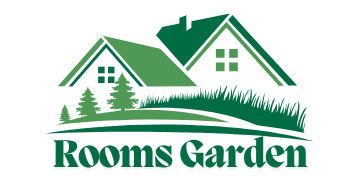
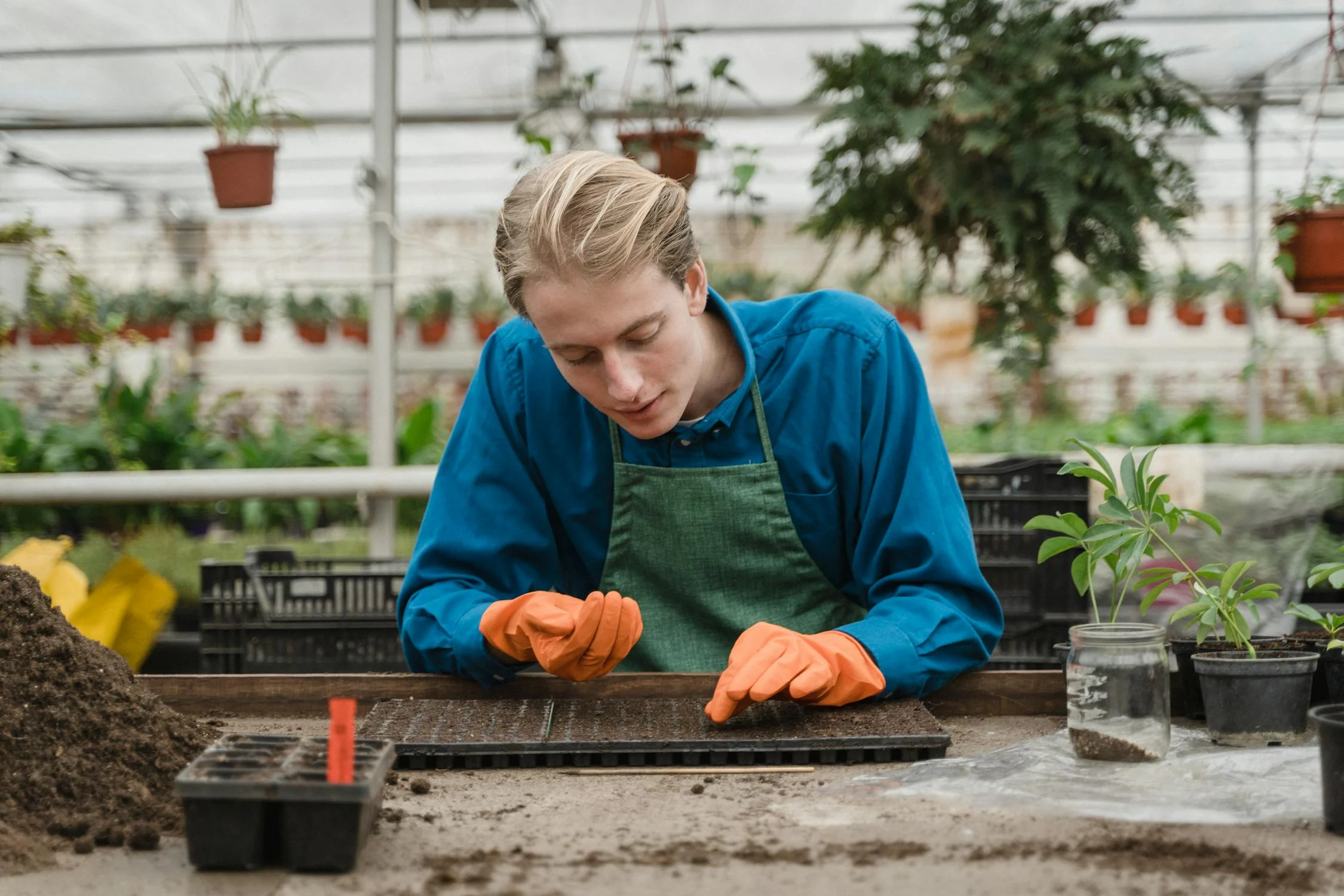
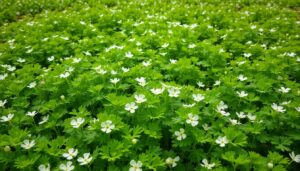

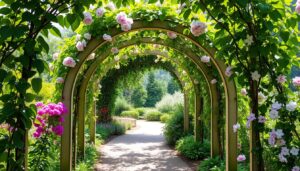
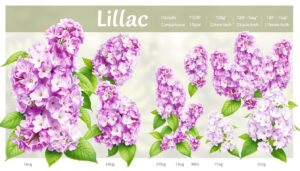

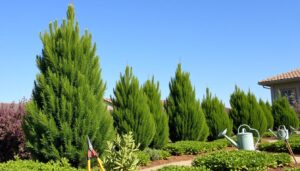


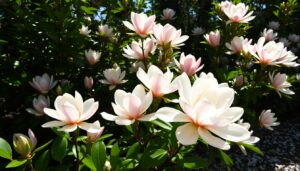
1 thought on “Rubber Mulch: Best Choice for Playgrounds & Gardens”